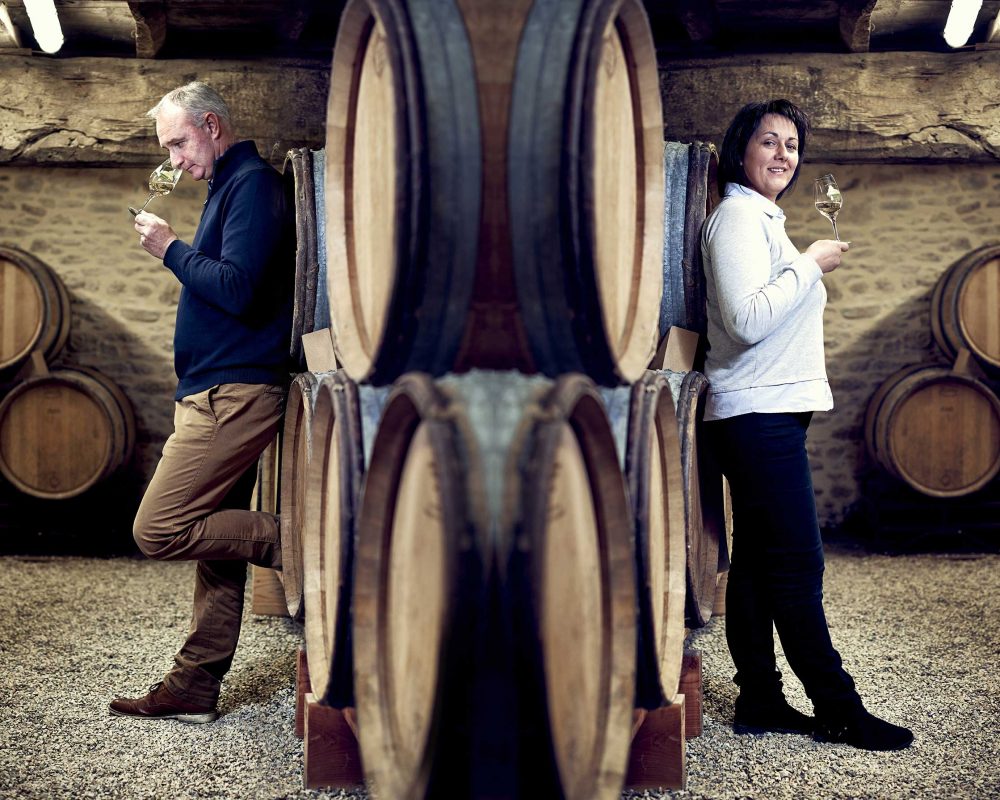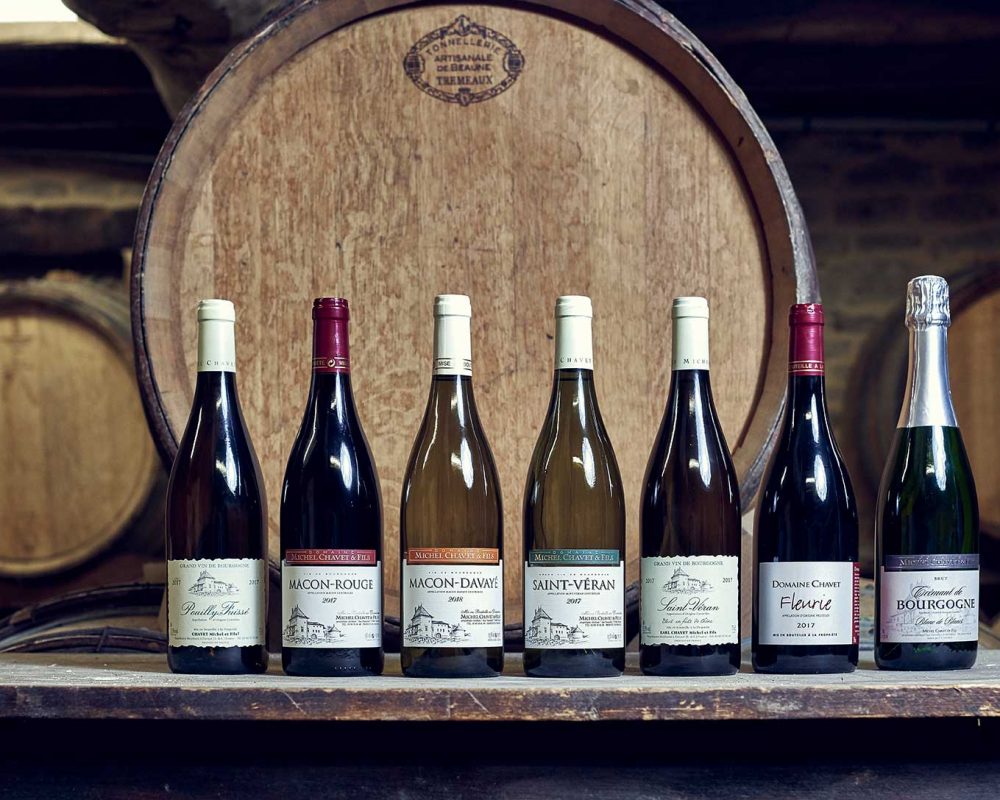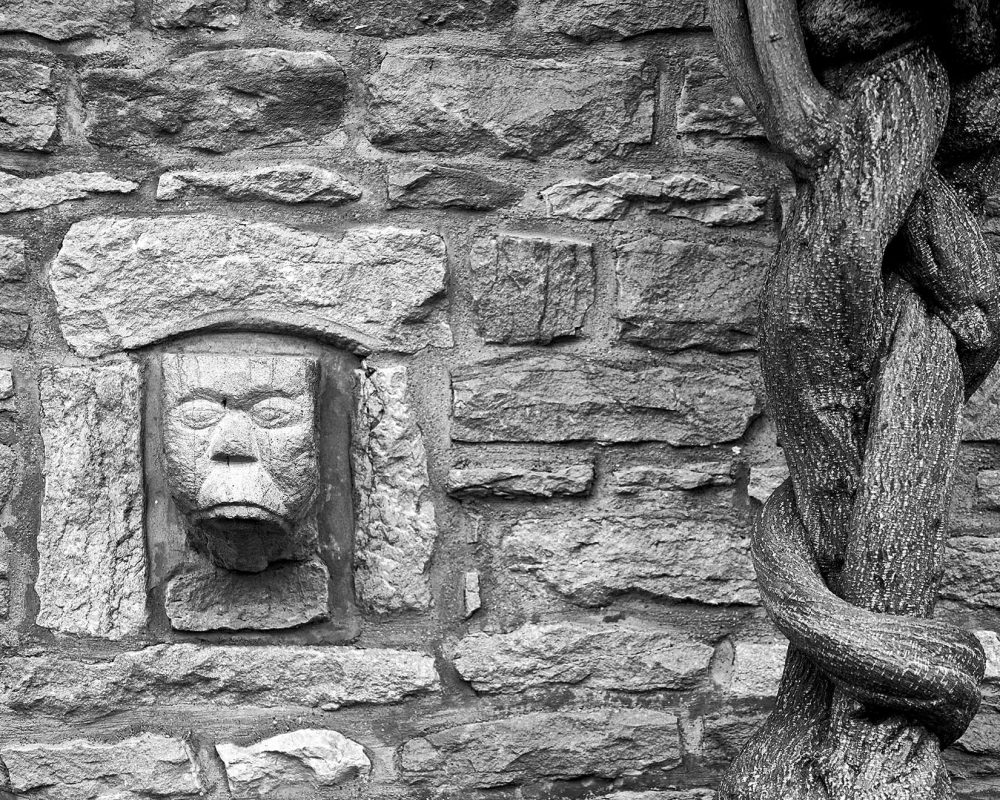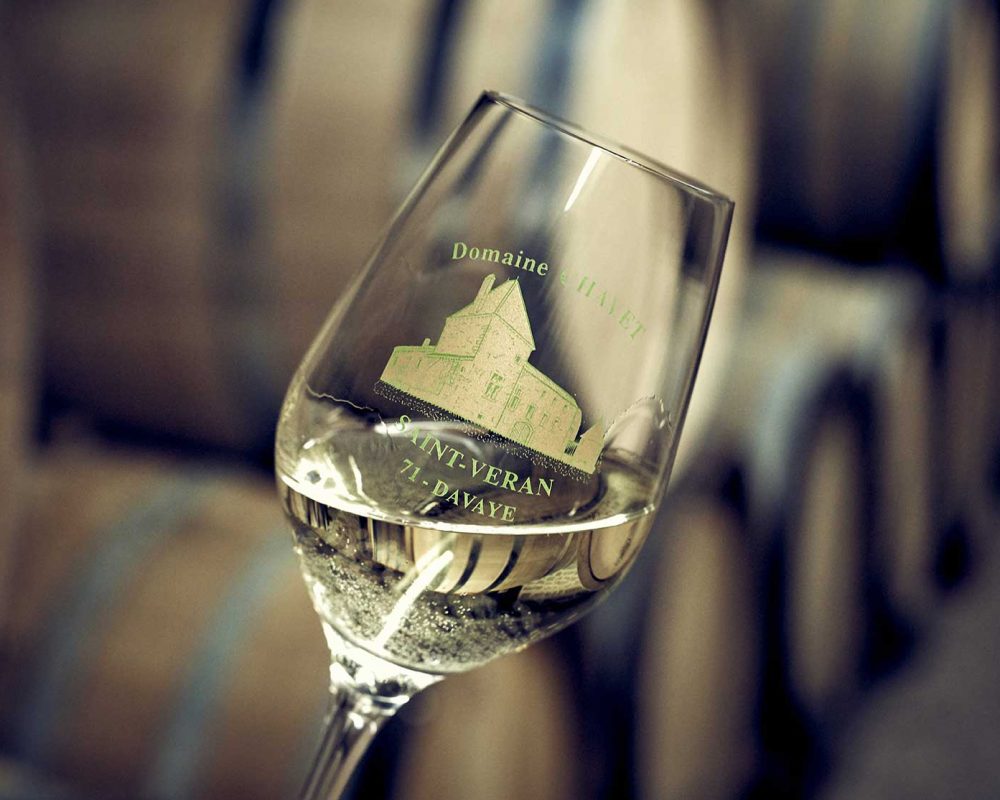Discover our range of wines. Click on a bottle to discover and download its technical sheet.
- ALL WINES
- WHITE WINES
- RED WINES
- SPARKLING WINES
-

Saint-Véran
Fût de ChêneChavet Wine Estate
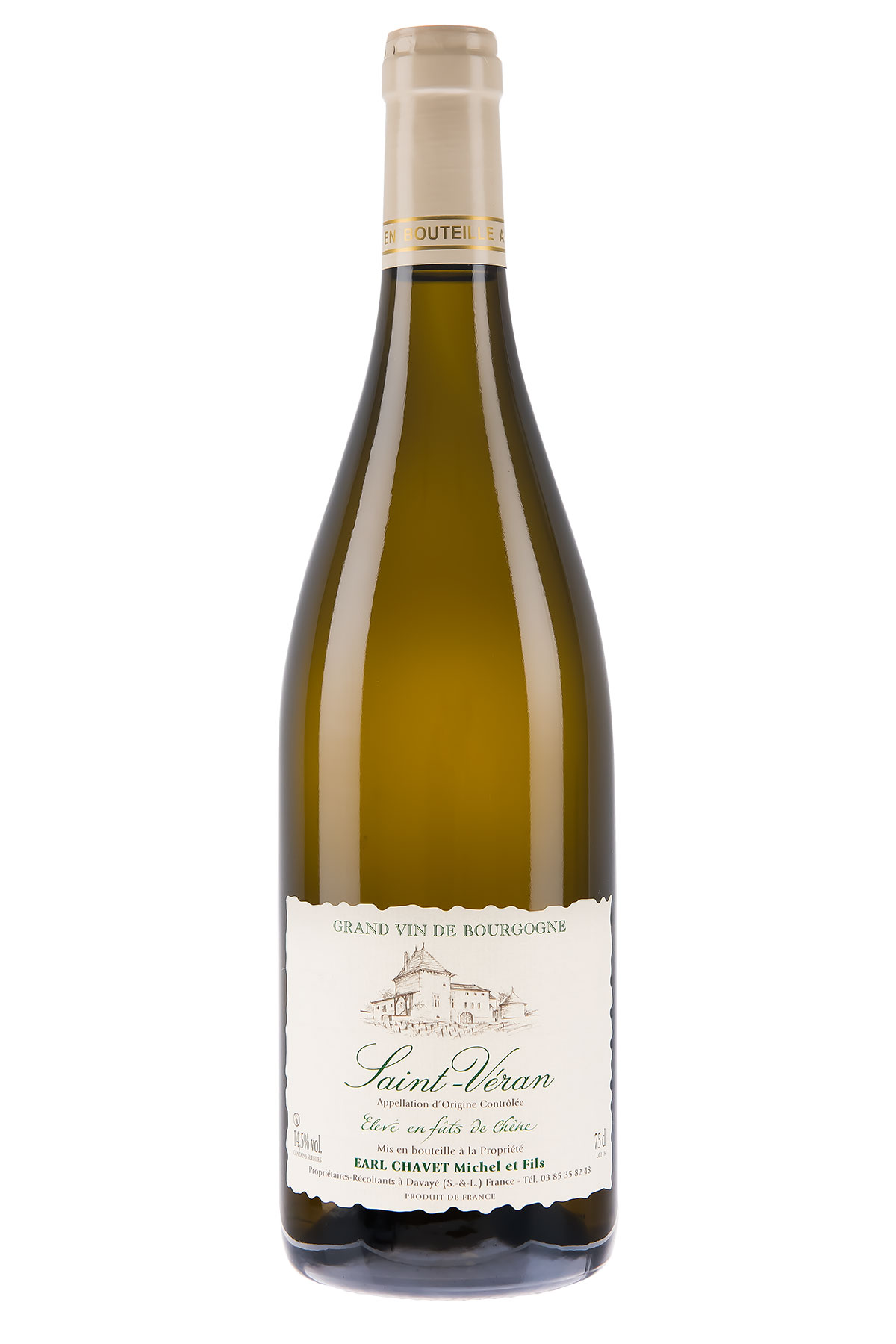
Saint-Véran Fût de Chêne
Terroir
Coming from Chavet’s estate's finest terroirs with southern and southeastern exposure, Saint-Véran Fût de Chêne acquires its character from the shallow and argilo-calcareous soils. The slope is steeper and the vines enjoy optimum sunshine, thus producing high-quality grapes.
Grape variety
100% chardonnay
Winemaking
The grapes are handpicked and pressed with a pneumatic press. After a 24-hour static settling at low temperature, the juice is placed in thermo-regulated stainless steel tanks to allow the alcoholic fermentation process. After a few days of fermentation, the juices are racked off and transferred to barrels to carry on their alcoholic and malolactic fermentation. This 100% oak barrel vintage is made with new barrels (10%) and 2- to 8-year-old barrels with stirring, for a period of 8 to 9 months.
Wine tasting
Saint-Véran Fût de Chêne has a bright yellow colour. This wine has fine aromas of vanilla, grilled and roasted almonds. The mouthfeel is complex, rich and intense with a round finish where the woody notes are well blended and subtle.
Food pairing
Saint-Véran Fût de Chêne goes perfectly with fish, white meats, snails, sweetbreads, etc.
PRINT TECHNICAL SHEET -
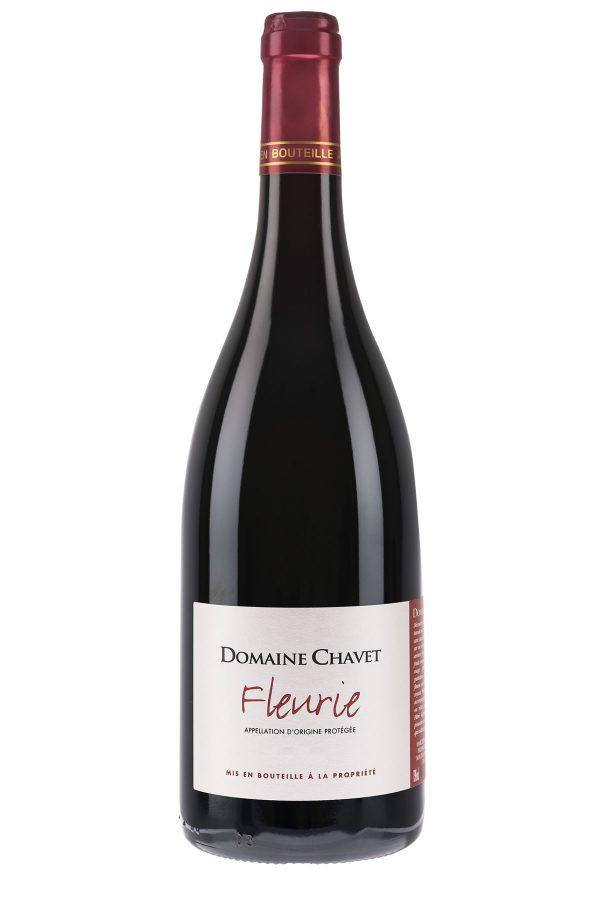
Fleurie
–Chavet Wine Estate
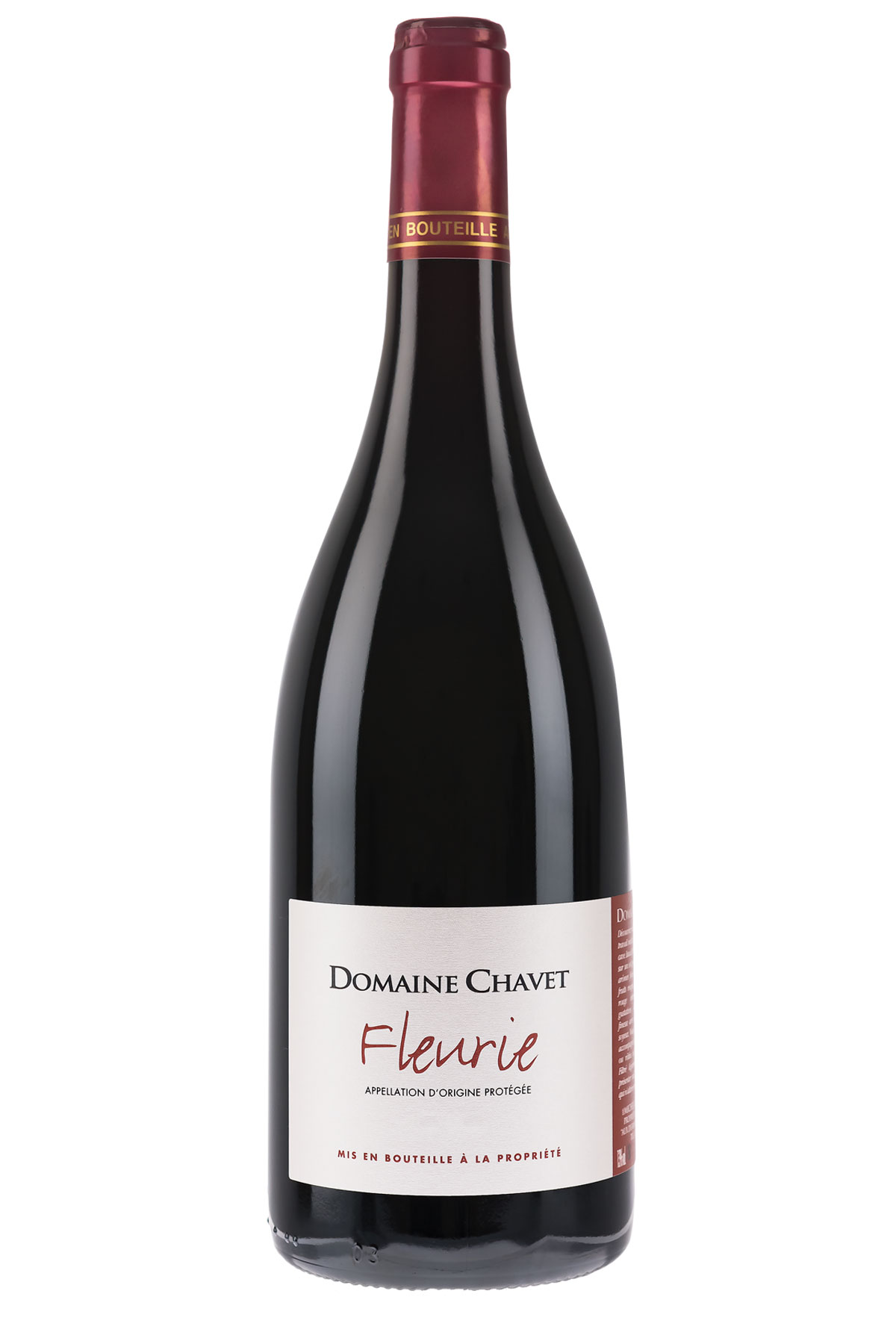
Fleurie
Terroir
Located in the village of Fleurie, this plot is very well exposed and harvested early. The granitic soil, composed of both clay and sand makes it especially well drained.
Grape variety
100% gamay
Winemaking
The handpicked grapes are placed in vats for a 10 to 12-day maceration process allowing their colour and substance to be extracted. The grapes are then pressed with a pneumatic press and placed into barrels for an 8-month maturing period.
Wine tasting
This wine presents a red, deep and intense colour. Aromas are floral (violet, blood peach) and red fruit (blackcurrant). Fleurie's supple and fine tannins feel very structured to the palate. This elegantly feminine wine evolves towards spicy notes over the years.
Food pairing
Fleurie pairs well with a simple and local cuisine such as cooked meat, red meat, lamb shank, poultry and also Lyon's specialities (kidneys, offal dishes). Serve between 14-17°C.
PRINT TECHNICAL SHEET -
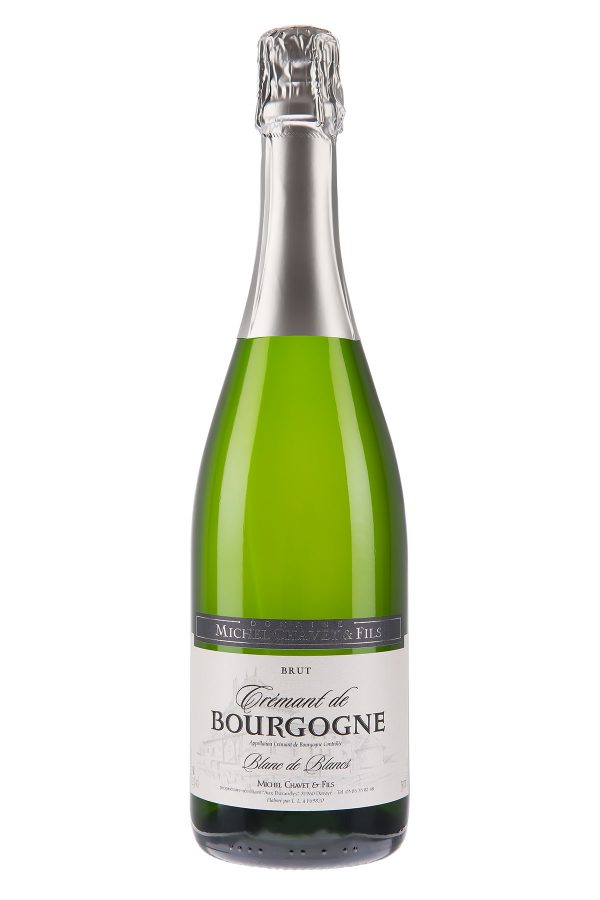
Crémant
de BourgogneChavet Wine Estate

Crémant de Bourgogne
Terroir
This is the estate's most remote parcel. It is located in the village of Charnay (Rhône). The soil is shallow and argilo-calcareous with flat orangey stones. The western orientation of the plot (i.e. the setting sun) allows the grapes to ripen nicely without excessive heat, and provides the slope a well-drained soil.
Grape variety
100% chardonnay (blanc de blanc)
Winemaking
After being handpicked and placed into crates, the grapes are then carefully pressed (pneumatic press). The winemaking process is similar, with alcoholic and malolactic fermentation in stainless steel tanks. Effervescence comes from the liqueur de tirage (a mix of still wine, sugar and yeast) during bottling. A 12-month maturation process is required to obtain the Crémant de Bourgogne appellation. Bottles are then regularly rotated to bring fermentation deposit to the neck, followed by disgorgement and the addition of the liqueur d'expédition (also called dosage).
Wine tasting
Crémant de Bourgogne possesses a white gold colour with fine bubbles.
Aromas of white flowers and citrus give this wine a lot of charm. The mouthfeel is light, fresh, crisp and well-balanced.Food pairing
Crémant de Bourgogne has a nice freshness and is perfect as an aperitif. It also goes well with desserts like appetisers, red fruit sorbet and chocolate tarts as it brings some lightness at the end of a meal. Serve between 10-12°C.
PRINT TECHNICAL SHEET -
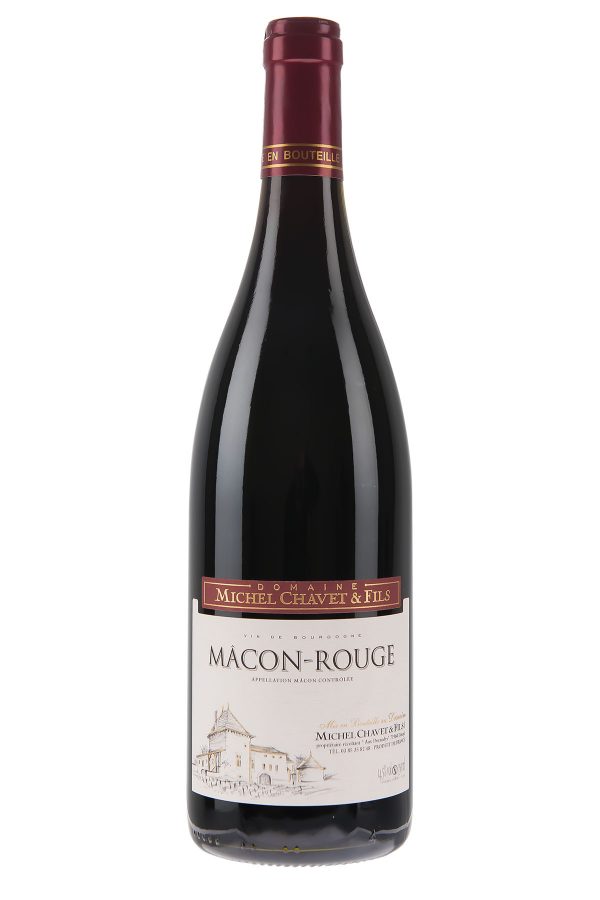
Mâcon Rouge
–Chavet Wine Estate
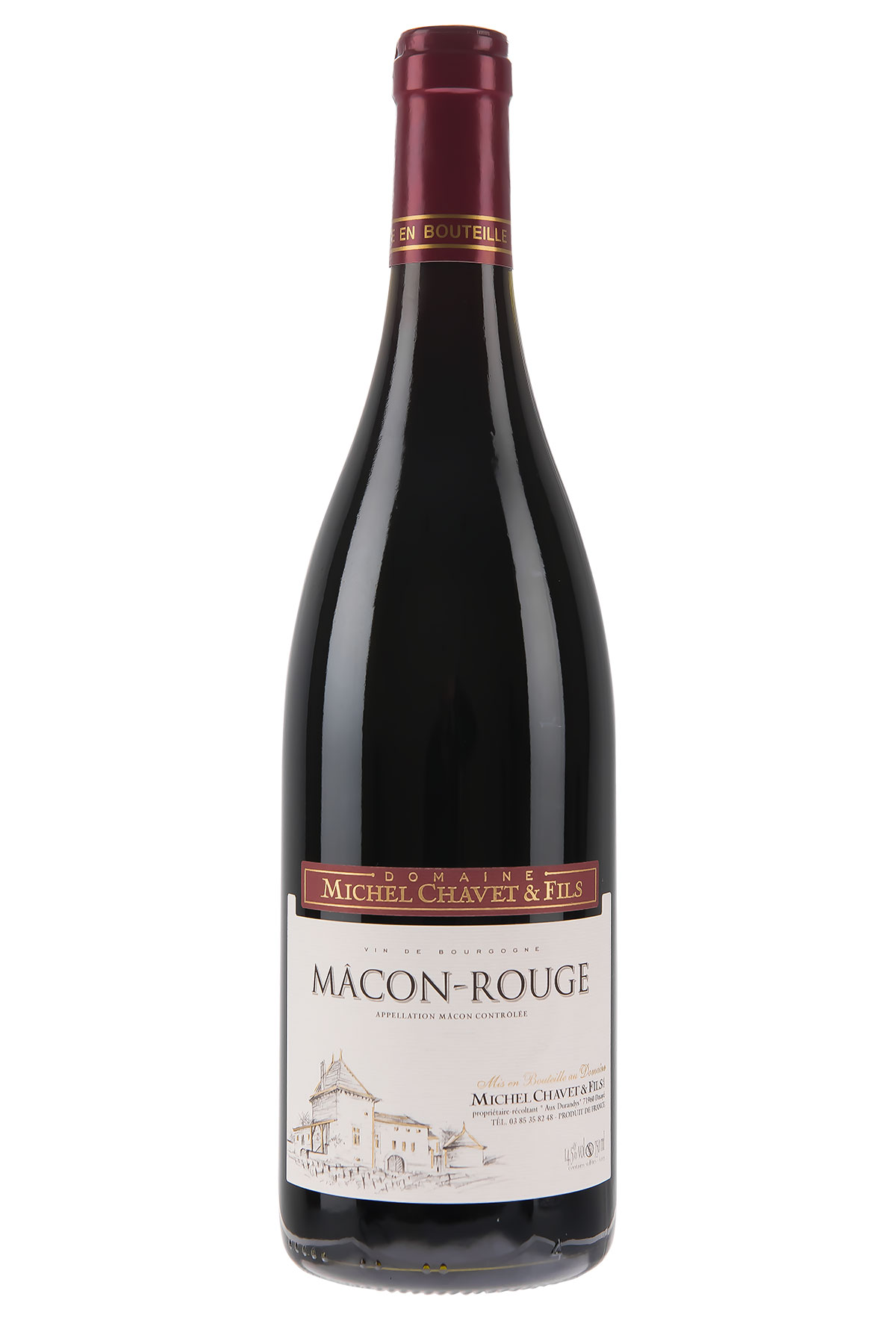
Mâcon Rouge
Terroir
Made from old plots in the village of Davayé, the Mâcon Rouge is produced on moderately sloping argilo-calcareous soils. Facing North-East, the vines benefit from a temperate climate favourable to fruity and elegant red wines.
Grape variety
100 % gamay
Winemaking
The handpicked grapes are placed in a maceration tank (both juice and grapes) for an 8-day fermentation process. During this stage, pumping over and punching down will occur successively to ensure the release of the aromas and tannins. After pneumatic pressing, wine finally matures in stainless steel tanks for 5 months, during which the malolactic process occurs.
Wine tasting
Mâcon Rouge has a lovely ruby-red colour with purplish gleams. The nose develops notes of small red fruits and spices. The mouthfeel has an amazing freshness and intensity. Mâcon Rouge is a supple and light wine with unique character.
Food pairing
Mâcon Rouge will complement platters of cooked meats as well as hams, terrines and pâtés. This wine is also excellent with barbecues and grilled meats.
PRINT TECHNICAL SHEET -
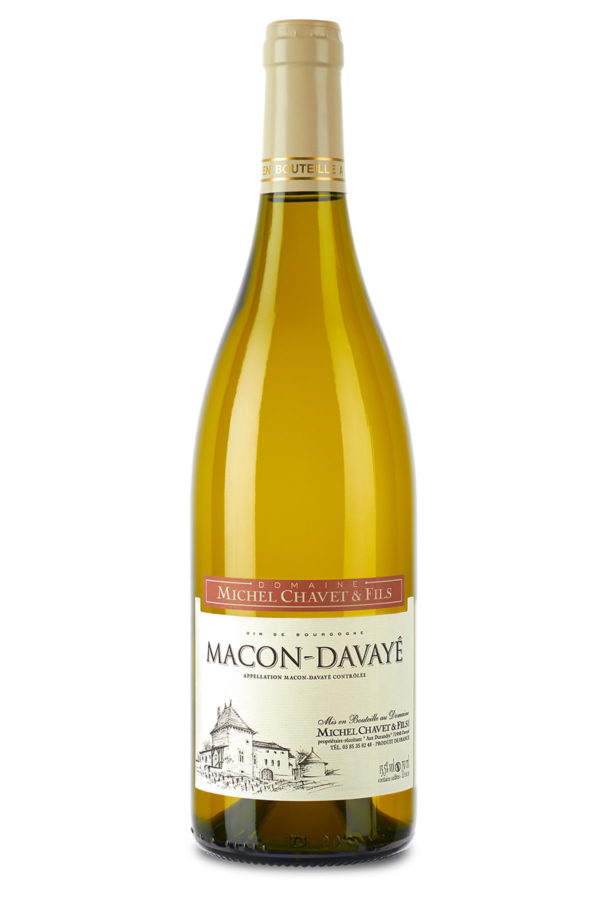
Mâcon Davayé
–Chavet Wine Estate

Mâcon Davayé Blanc
Terroir
Chavet's Davayé Mâcon is produced on plots of land with quite deep argilo-calcareous or clay and silt soils mostly facing North-East or West.
Grape variety
100% de chardonnay
Winemaking
Pressing is carried out using a pneumatic press, followed by a 24-hour static settling (juice clarification). Clear juices are then placed in stainless steel tanks with temperature control to carry out the alcoholic and malolactic fermentation. After that, wine is matured until March on fine lees.
Wine tasting
This wine has a bright yellow colour with green highlights. A fresh and appealing fruit driven aroma of citrus and floral notes. The mouthfeel is balanced, elegant and ends on a fresh and intense note.
Food pairing
Mâcon Davayé is perfect as an aperitif (12°C) and at the beginning of a meal with shellfish, cooked meats and soft-ripened goat cheese.
PRINT TECHNICAL SHEET -
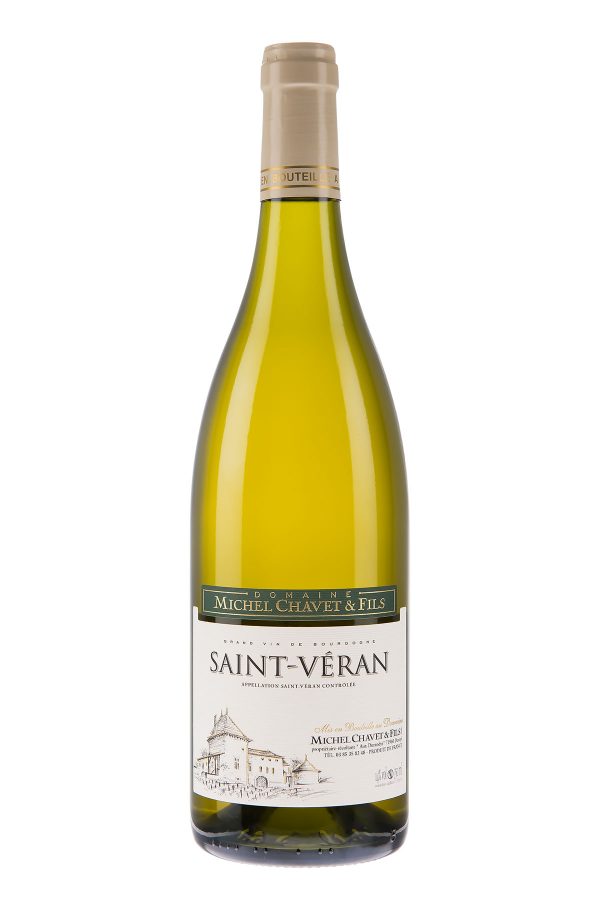
Saint Véran
–Chavet Wine Estate
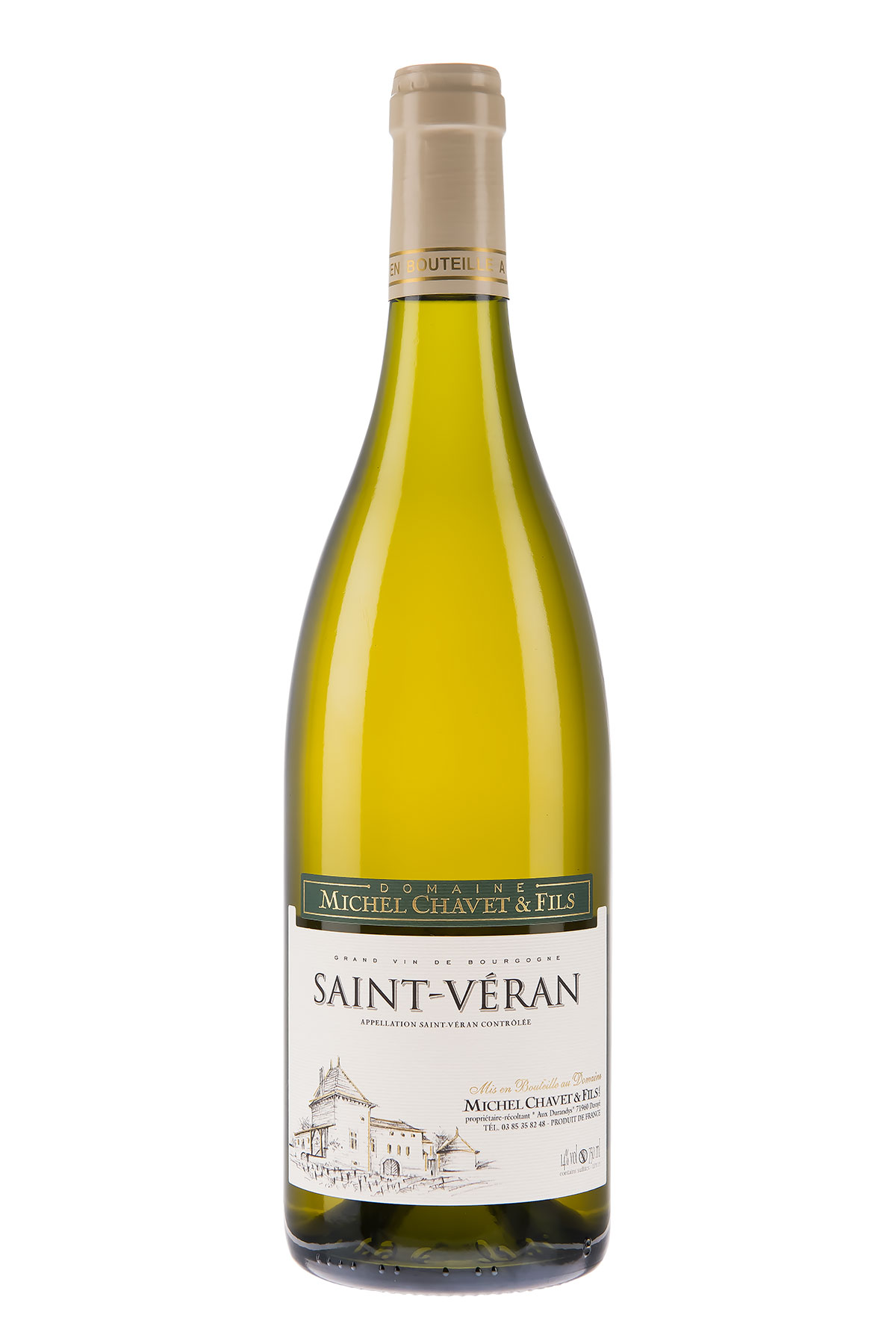
Saint-Véran
Terroir
Saint-Véran is produced in both villages of Prissé and Davayé. It comes from about thirty plots of land with argilo-calcareous soil made up of small orangey stones known as flints. Chardonnay fully expresses its character on these rather sloping South, South-East oriented soils.
Grape variety
100% Chardonnay
Winemaking
After a low-pressure pneumatic pressing, the juice is settling at low temperature for 24 hours. Alcoholic fermentation takes place in stainless steel tanks under temperature control to preserve all the aromas and character of the Saint-Véran. Once its malolactic fermentation is completed, the Saint-Véran matures on fine lees until April.
Wine tasting
The wine has a beautiful golden robe. Its delicate aromas of white flowers (peach, pear) with hints of hazelnut add a refreshing note. The mouthfeel is full, intense, round and complex with a nice acidulous and mineral finish.
Food pairing
Saint-Véran can be enjoyed as an aperitif and throughout the meal with shellfish, fish, cream-based poultry dishes, andouillettes, snails and goat's cheese. Serve at 12°C.
PRINT TECHNICAL SHEET -
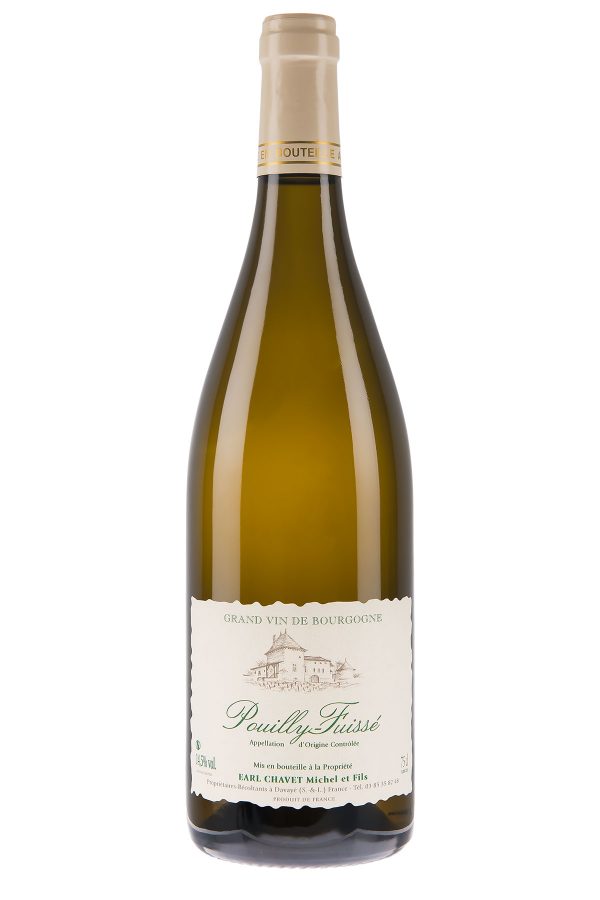
Pouilly Fuissé
–Chavet Wine Estate
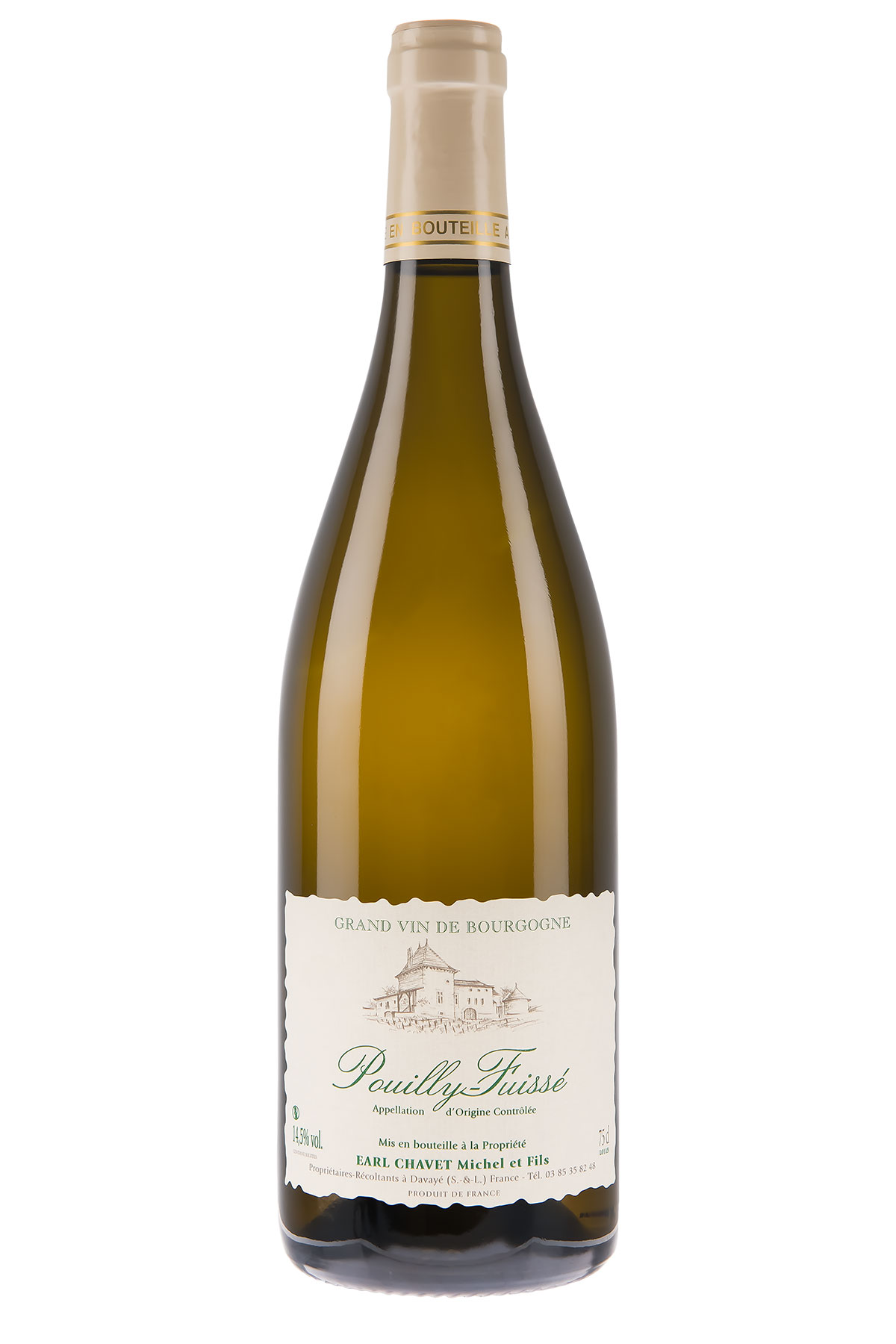
Pouilly-Fuissé
Terroir
Pouilly-Fuissé is produced in the villages of Solutré and Vergisson. These are the steepest plots of Chavet's estate, located within the great natural sites of The Rocks of Solutré and Vergisson. The exposure is South and North-East. Shallow soils are very chalky with scree on the surface.
Grape variety
100% chardonnay
Winemaking
Handpicked with the greatest care, the grapes are pressed with a pneumatic press. The static settling is set at low temperature for 18 hours. The juices are then poured into thermo-regulated stainless steel tanks to begin their alcoholic fermentation, which will carry on in tanks or barrels for the most part of the vintage, which is about 30% with stirring. Malolactic fermentation is carried out, after which an 8 to 9-month maturing period on fine lees is required to produce Pouilly-Fuissé.
Wine tasting
Pouilly-Fuissé's brilliant golden colour reveals a wide range of shades. An harmonious bouquet, with delicate aromas of white flowers. This wine offers a clean, mineral (flinty) finish and impresses with its elegance and character.
Food pairing
Excellent with fish, white meats, scallops, sweetbreads, etc.
PRINT TECHNICAL SHEET
